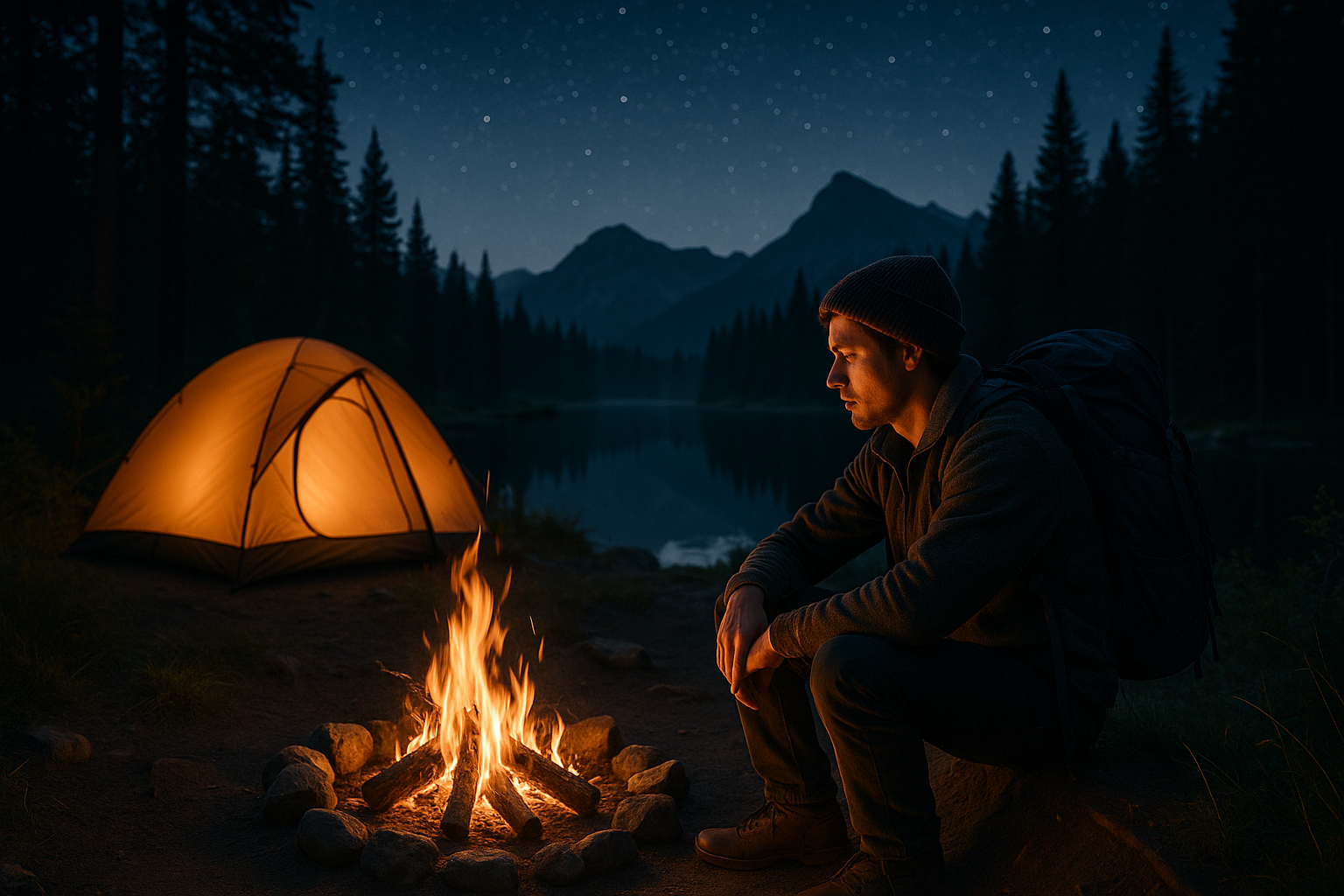The Evolution of Camping: From Traditional Wilderness to Modern Glamping
Glamping—a portmanteau of “glamorous” and “camping”—has redefined what it means to experience the outdoors. This trend combines the immersive natural experience of traditional camping with comforts typically associated with hotels or resorts. Modern glamping accommodations include safari tents, yurts, treehouses, tiny homes, and converted Airstreams, often equipped with proper beds, electricity, heating, and sometimes even air conditioning. These accommodations offer a gateway to nature for travelers who might otherwise avoid camping due to concerns about comfort, convenience, or safety.

The practice of camping has deep historical roots, dating back to early nomadic cultures who lived entirely outdoors. However, recreational camping as we know it today began to take shape in the late 19th century. Thomas Hiram Holding, often considered the father of modern recreational camping, published the first camping handbook in 1908, inspiring generations to embrace the outdoors. Throughout the 20th century, camping evolved from a necessity to a leisure activity, with equipment gradually improving to enhance comfort while maintaining the essence of outdoor living.
Modern Glamping: The New Face of Outdoor Adventures
Glamping—a portmanteau of “glamorous” and “camping”—has revolutionized the outdoor accommodation landscape. Unlike traditional camping that emphasizes simplicity and sometimes discomfort as part of the experience, glamping combines the immersion in nature with luxury amenities. Modern glamping accommodations range from safari-style canvas tents with proper beds and electricity to treehouse retreats with hot tubs and fully-equipped kitchens. This evolution has opened outdoor experiences to demographics previously reluctant to camp, including luxury travelers and those with physical limitations that make traditional camping challenging.
The aesthetic appeal of glamping has become a social media phenomenon, with Instagram-worthy setups featuring string lights, plush bedding, and stylish décor replacing the utilitarian approach of traditional campsites. This visual appeal has significantly contributed to glamping’s popularity among younger generations seeking experiences that are both authentic and photogenic.
The Advantages and Challenges of Glamping
Glamping offers numerous benefits over traditional camping experiences. The most obvious is comfort—sleeping on a proper mattress rather than a thin camping pad makes a significant difference in sleep quality and overall enjoyment. Climate control, whether through heating in winter months or cooling in summer, extends the camping season substantially. Private bathrooms eliminate the need to share facilities or trek through the dark to reach communal washrooms.
However, these comforts come with challenges. The environmental impact of glamping can be significantly higher than traditional camping, with increased energy usage, water consumption, and waste production. The infrastructure required for glamping sites often demands more extensive development of natural areas. Additionally, the higher cost of glamping creates accessibility issues, potentially turning what was once an affordable vacation option into a luxury experience beyond many families’ budgets.
The disconnect between glamping and traditional camping skills also raises questions about outdoor education. As more people choose glamping over conventional camping, fewer learn fundamental wilderness skills like fire building, navigation, and leave-no-trace principles.
The Impact of Glamping on Travelers and the Industry
The rise of glamping has dramatically expanded the outdoor accommodation industry. What was once dominated by public campgrounds and basic private campgrounds has evolved into a diverse ecosystem of specialized glamping providers, from boutique operations to large hospitality chains entering the market. This expansion has created new jobs in rural areas and contributed to economic development in regions previously overlooked by traditional tourism.
For travelers, glamping has bridged the gap between conventional hotels and rugged camping. It serves as an entry point for those curious about outdoor experiences but hesitant to commit to traditional camping’s perceived discomforts. Many glamping enthusiasts eventually develop an interest in more traditional outdoor activities, using glamping as a gateway to deeper nature connections.
The industry has responded to this trend by creating hybrid experiences that combine elements of both worlds—sites offering a mix of accommodation types from basic tent platforms to luxury cabins, allowing groups with different comfort preferences to vacation together.
Sustainable Practices in Modern Camping
As both traditional camping and glamping evolve, sustainability has become a central concern. Many modern camping operations—across the comfort spectrum—have implemented eco-friendly practices that minimize environmental impact while maintaining guest satisfaction.
Solar power has become increasingly common at both traditional campgrounds and glamping resorts, reducing reliance on generators or grid electricity. Water conservation measures, including low-flow fixtures and rainwater collection systems, help preserve this precious resource. Composting toilets have gained popularity as an alternative to chemical portable toilets or water-intensive flush systems.
Material choices reflect this sustainability focus as well, with many glamping structures utilizing reclaimed materials, sustainably harvested wood, and natural insulation. Some innovative glamping providers have even developed mobile or temporary structures that can be erected and dismantled without permanent damage to the landscape.
The Future of Outdoor Accommodations
The camping industry continues to evolve rapidly, with several emerging trends pointing toward its future direction. Technology integration is becoming more common, with glamping sites offering high-speed internet, smart home features, and even virtual reality experiences that complement rather than replace nature immersion. Remote work trends have spawned “workamping” options—glamping accommodations specifically designed for digital nomads seeking natural settings without sacrificing productivity.
Climate adaptation is another significant trend, with glamping structures being designed for resilience against extreme weather events. Four-season glamping is expanding, with specialized insulation and heating systems making winter glamping viable even in harsh climates.
The distinction between traditional camping and glamping is likely to blur further, with modular approaches allowing travelers to customize their outdoor experience based on personal preferences, weather conditions, and specific needs. This personalization represents perhaps the most significant evolution—moving from prescribed experiences to adaptable ones that maintain the core value of connecting with nature while accommodating individual comfort requirements.
As outdoor accommodations continue to evolve, the fundamental appeal remains constant: disconnecting from daily routines to reconnect with the natural world. Whether through a minimalist backcountry tent or a luxury glamping pod, this connection represents the enduring value that has sustained camping through its many evolutionary stages.




